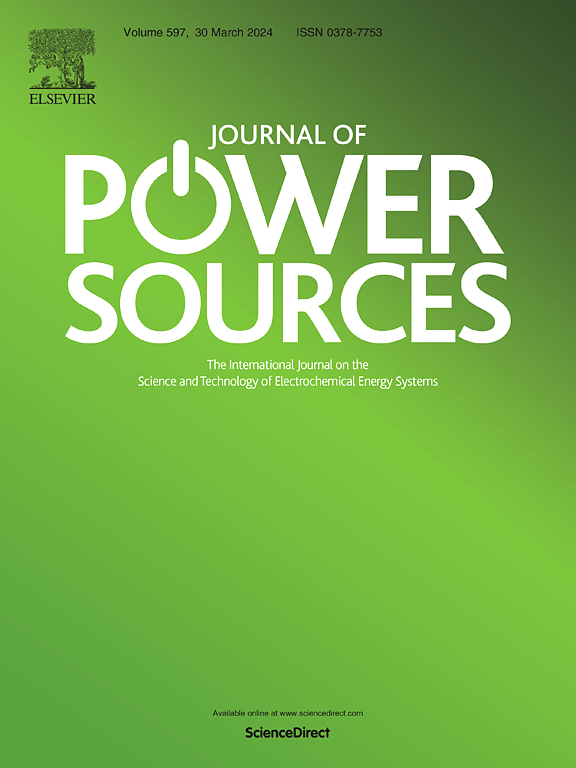Control of ion-transport channel structure of a metal-organic framework incorporated membrane for vanadium redox flow batteries
IF 8.1
2区 工程技术
Q1 CHEMISTRY, PHYSICAL
引用次数: 0
Abstract
Highly selective proton exchange membranes (PEMs) are essential for optimal performance in vanadium redox flow batteries (VRFBs). Achieving both high proton conductivity and low vanadium ion permeability simultaneously poses a significant challenge due to the intrinsic mechanism of ion transport within the membrane. In this study, a composite membrane series is developed by incorporating a Zr-based metal-organic framework (MOF) material, MIP-202, into sulfonated poly (ether-ether-ketone) (SPEEK) polymer. This integration restructures the ion-transport channels successfully, providing proton transfer paths but hindering vanadium crossover through size sieving effects. Additionally, it facilitates the formation of a hydrogen bonding network within hydrophilic domains and expands the ionic cluster sizes to enhance ion transfer. These combined effects significantly enhance membrane performance, resulting in a 76.5 % increase in ion selectivity. Detailed proton transfer processes within the polymer-MOF composite system are proposed based on experimental characterization and density functional theory (DFT) analysis to better understand the ion selectivity enhancement mechanism. The modification of the polymer membrane benefits the VRFB, demonstrating a Coulombic efficiency of 99.03 %, voltage efficiency of 81.99 %, and energy efficiency of 81.20 % at 120 mA cm−2, while retaining 92.20 % capacity after 200 cycles, surpassing the performance of pristine SPEEK, Nafion 117 and Nafion 212 membranes.

求助全文
约1分钟内获得全文
求助全文
来源期刊

Journal of Power Sources
工程技术-电化学
CiteScore
16.40
自引率
6.50%
发文量
1249
审稿时长
36 days
期刊介绍:
The Journal of Power Sources is a publication catering to researchers and technologists interested in various aspects of the science, technology, and applications of electrochemical power sources. It covers original research and reviews on primary and secondary batteries, fuel cells, supercapacitors, and photo-electrochemical cells.
Topics considered include the research, development and applications of nanomaterials and novel componentry for these devices. Examples of applications of these electrochemical power sources include:
• Portable electronics
• Electric and Hybrid Electric Vehicles
• Uninterruptible Power Supply (UPS) systems
• Storage of renewable energy
• Satellites and deep space probes
• Boats and ships, drones and aircrafts
• Wearable energy storage systems
 求助内容:
求助内容: 应助结果提醒方式:
应助结果提醒方式:


